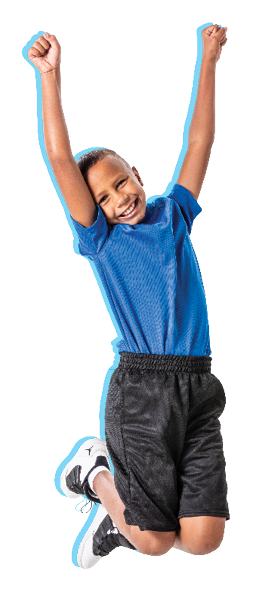Think back to your elementary P.E. class. Did you learn about your physical health, mental health, or social health? More importantly, did you learn about WHY you need to take care of your health? If you did, that’s amazing! Unfortunately, most of us did not have that experience. According to many research studies, early health education can have a positive impact in preventing chronic diseases and improving health outcomes for children and adolescence. The CDC states “providing health education as early as possible can help youth to develop positive well-being, academic success, and healthy outcomes into adulthood.” In my elementary Wellness class, this is the goal of my program!
Making the Switch: Gym Class to Wellness Class
One of the key differences in my wellness curriculum is the focus on all sides of the health triangle. In each lesson, I incorporate a health concept that focuses on physical health, mental health, or social health. I communicate the importance of ALL sides of the health triangle and emphasize that mental health and social health are just as important as physical health. My hope is for students to be inspired to learn about their health and recognize their personal responsibility for keeping their health triangle balanced.
To end my class, I ask students two questions: What did you learn? Why did you learn it?
Asking “WHY” is often more important than asking “what”. If students can identify why they learned this and how it is valuable to their life, they are more likely to retain the information and more importantly, apply it!
In my elementary curriculum, I focus on skills, instead of sports. I want to give my students the maximum amount of practice time, in order to build their confidence in moving their bodies and learning new skills. To do this all my activities are individual or small group-based, instead of team sport focused. This allows me to easily implement modifications to meet students where they are, so ALL students experience success. It also allows students to get adequate practice with the skill and recognize their own improvements. In traditional P.E programs, the athletes and higher-skilled students shine and build confidence, while lower-skilled students fall through the cracks and might lose confidence in their abilities. A combined focus on health concepts and skills allows all students to grow and learn!
How I Incorporate Health Concepts into Activities
Ideally, students are active while learning the health concepts I am teaching. This means that I need to be creative with the activities that I choose. Some simple universal activities that can be modified to teach multiple concepts are relay races, tag activities, this or that slides, and obstacle courses. After looking at standards and creating my outcomes, I look at my equipment and think of something that gets students moving and reinforces the health concepts. Typically, I use these activities as a warmup and introduction to the class. Throughout the class, I will revisit the concept and ask questions to check for understanding.
Simple Health Activity Examples
Here are a few examples of some simple activities that I have used to teach health concepts:
Mental Health: Hurt or Help Your Brain
Instructions:
Designate one corner or side of the gymnasium as “hurts my brain” and one as “helps my brain”
Show students a statement (ex: Playing video games or watching tv for LONG periods of time Playing outside with friends), they decide if it hurts or helps their brain. When the music starts, students travel around the activity space using a designated locomotor skill. When the music stops, student run to either “hurts my brain” or “helps my brain” sign. Discuss the activity the effect it has on your mental health.
Physical Health: Cardiovascular Health
Instructions:
Students walk 2 laps around the gym. Student reflect on how their body feels, you can ask questions to prompt students. Example: Is your breathing slow or fast? Are you sweating? Is your heart beating fast or slow? Then, students run 2 laps. Have students reflect on the same questions. Discuss the benefits of cardiovascular health, and how exercise impacts the heart.
Social Health: Kindness
Instructions:
Students are traveling around the general activity space using a designated locomotor skill. When the music stops the students freeze. Choose one student to roll a dice. The students form a group with the number that was rolled. In this group each person shares a compliment to another person in the group (making sure each person gets a compliment!). Repeat with new locomotor skills and new dice roller.
Watching Wellness Work
I teach in a kindergarten through 4th grade urban school, where many of my students live in poverty, experience trauma, and are exposed to community violence. With the experiences of my students, the mental and social components of my class are crucial. Students of any age, in any school can positively benefit from a wellness curriculum in elementary school.
By eliminating large team activities and focusing on individual success I have seen participation increase, and class culture improve. Instead of competing against each other, students are competing with themselves and encouraging others to improve alongside them.
As an elementary educator, I have the unique opportunity to be the first experience a child has with physical education/wellness class. It is my responsibility to ensure that this experience is valuable and gives them a solid foundation to live a healthful life. After all, you have ONE body, if you don’t take care of it, then where will you live? Its our job to teach students how and why they need to care for their health!








